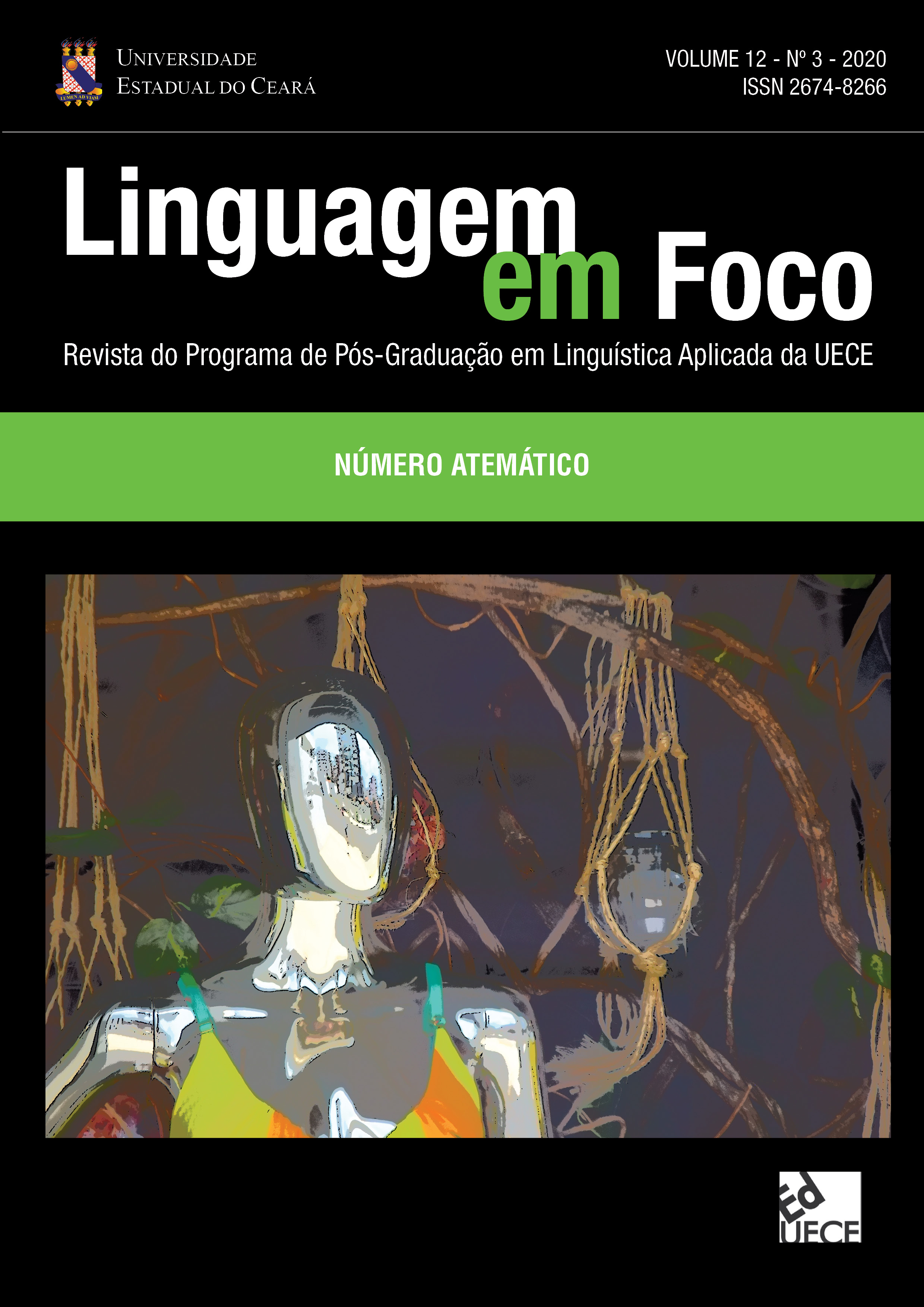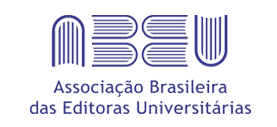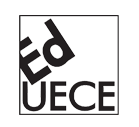Por que usar a LM na aula de LE
Do plurilinguismo ao translinguismo
DOI:
https://doi.org/10.46230/2674-8266-12-4245Palavras-chave:
Aprendizagem de língua estrangeira, Plurilinguismo, Translinguismo, Aprendizagem intercultural, IntercompreensãoResumo
Uma questão recorrente com a qual se deparam os professores de língua estrangeira (LE) é o que fazer quando os alunos se expressam em sua língua materna (LM) durante a aula. Este artigo apresenta argumentos em favor do uso LM como recurso para a aprendizagem de LE. Ainda que a não exclusão da LM na sala de aula de LE não seja uma proposta inovadora, a comunicação integralmente em LE desde a primeira aula ainda é considerada uma vantagem em muitos cursos de LE, em oposição àqueles que aumentam progressivamente o input conforme a evolução do aluno. De fato, o input linguístico e as oportunidades de mobilização oral e escrita da LE têm maior relevância para a aprendizagem do que explicações sobre a estrutura da língua; entretanto, é possível e desejável empregar a LM como recurso para otimizar a aprendizagem de qualquer LE. Assim, apresento aqui alguns modelos de ensino plurilíngue elaborados para a realidade europeia e os repensamos de acordo com a realidade brasileira. Defende-se, desse modo, a perspectiva translíngue para o ensino de LE, superando a ideia de plurilinguismo enquanto conhecimentos separados de línguas não relacionadas entre si.
Downloads
Referências
ARBONA, Anna Devís; CHIREAC, Silvia-Maria. Language Learning Methodology for Adults: A Study of Linguistic Transfer. Procedia – Social and Behavioral Sciences, 2014, n. 142, p. 318-324.
BACH, Gerhard. Bilingualer Unterricht: Lernen – Lehren – Forschen. In: Bach, Gerhard; Niemeier, Susanne. (Eds.). Bilingualer Unterricht: Grundlagen, Methoden, Praxis, Perspektiven. 4. ed. Frankfurt am Main: Peter Lang, 2005, p. 9-22.
BAKHTIN, Mikhail. Discourse in the Novel. In: HOLQUIST, Michael (Org.). The Dialogic Imagination. Austin: University of Texas Press, 1981, p. 259-422.
BEACCO, Jean-Claude. From linguistic diversity to plurilingual education: Guide for the development of language education policies in Europe. Estrasburgo: Conselho da Europa, 2007.
BEACCO, Jean-Claude; BYRAM, Michael; CAVALLI, Marisa; COSTE, Daniel; CUENAT, Mirjam Egli; GOULLIER, Francis; PANTHIER, Johanna. Guide for the development and implementation of curricula for plurilingual and intercultural education. Estrasburgo: Conselho da Europa, 2016.
BOHUNOVSKY, Ruth. A tradução no ensino de línguas: vocabulário, gramática, pragmática ou consciência cultural? In: Trabalhos em Linguística Aplicada, v. 50, n. 1, 2011, p. 205-217.
BORGES, Tatiana Diello; OLIVEIRA, Vitalino Garcia; do LAGO, Neuda Alves. Crenças de uma professora de língua inglesa acerca do ensino/aprendizagem desse idioma. In: Entretextos, Londrina, v. 7, 2007, p. 229-246.
BRASIL. Lei nº 9.394, de 20 de dezembro de 1996. Estabelece as diretrizes e bases da educação nacional. Brasília, DF: 1996. Disponível em: http://www.planalto.gov.br/ccivil_03/LEIS/L9394.htm. Acesso em: 20 jan. 2020.
BRASIL. Lei nº 11.161, de 5 de agosto de 2005. Dispõe sobre o ensino da língua espanhola. Brasília, DF: 2005. Disponível em: http://www.planalto.gov.br/ccivil_03/_ato2004-2006/2005/lei/l11161.htm. Acesso em: 10 jan. 2020.
BRASIL. Lei nº 13.415, de 16 de fevereiro de 2017. Altera as Leis nº 9.394, de 20 de dezembro de 1996, que estabelece as diretrizes e bases da educação nacional, e 11.494, de 20 de junho 2007, que regulamenta o Fundo de Manutenção e Desenvolvimento da Educação Básica e de Valorização dos Profissionais da Educação, a Consolidação das Leis do Trabalho - CLT, aprovada pelo Decreto-Lei nº 5.452, de 1º de maio de 1943, e o Decreto-Lei nº 236, de 28 de fevereiro de 1967; revoga a Lei nº 11.161, de 5 de agosto de 2005; e institui a Política de Fomento à Implementação de Escolas de Ensino Médio em Tempo Integral. Brasília, DF: 2017b. Disponível em: http://www.planalto.gov.br/ccivil_03/_Ato2015-2018/2017/Lei/L13415.htm#art22. Acesso em: 10 jan. 2020.
BRITO, Karim S. A promoção da competência multilíngue na escola: encorajando possibilidades. In: Calidoscópio, v. 11, n. 1, 2013, p. 63-69.
BUSCH, Brigitta. Das sprachliche Repertoire oder Niemand ist einsprachig. Klagenfurt: Drava, 2012.
BUSCH, Brigitta. Expanding the Notion of the Linguistic Repertoire: On the Concept of Spracherleben - The Lived Experience of Language. In: Applied Linguistics, v. 38, n. 3, 2015, p. 340-358.
BUSCH, Brigitta. Mehrsprachigkeit. Wien: Facultas WUV UTB, 2013.
BUTLER, Judith. Gender trouble: Feminism and the subversion of identity. London: Routledge, 1990.
CANAGARAJAH, Suresh (Org.). Literacy as Translingual Practice: Between Communities and Classrooms. New York: Routledge, 2013.
CANAGARAJAH, Suresh. Translingual Practice as Spatial Repertoires: Expanding the Paradigm beyond Structuralist Orientations. In: Applied Linguistics, v. 39, n. 1, 2017, p. 31-54.
CAPUCHO, Filomena. Línguas e identidades culturais: da implicação de políticos e (socio)linguistas. In: DA SILVA, Fábio L.; RAJAGOPALAN, Kanavilil (Org.) A linguística que nos faz falhar. São Paulo: Parábola Editorial, 2004, p. 83-87.
CAPUCHO, Maria Filomena. Intercompreensão – Porquê e como? – Contributos para uma fundamentação teórica na noção. In: REDINTER-Intercompreensão, v. 1, n. 1, 2010, p. 85-102.
CARVALHO NETO, Geraldo Luiz de; BOHUNOVSKY, Ruth. Tradução e mediação no ensino de alemão como língua estrangeira. In: BOHUNOVSKY, Ruth. (Org.) Ensinar alemão no Brasil: contextos e conteúdos. Curitiba: UFPR, 2011, p. 237-255.
CENOZ, Jasone. The Acquisition of Pragmatic Competence and Multilingualism in Foreign Language Contexts. In: SOLER, Eva Alcón; JORDÀ, Maria Pilar Safont (Orgs.) Intercultural Language Use and Language Learning. Dordrecht: Springer, 2007.
CONSELHO DA EUROPA. Quadro europeu comum de referência para línguas: Aprendizagem, ensino, avaliação. Trad. de ROSÁRIO, M. J. P.; SOARES, N. V. Porto: Edições ASA, 2001.
ESPÍRITO SANTO, Diogo Oliveira; SANTOS, Kelly Barros. A invenção do monolinguismo no Brasil: por uma orientação translíngue em aulas de “línguas”. In: Calidoscópio, v. 16, n. 1, 2018, p. 152-162.
GARCÍA, Ofelia; WEI, Li. Translanguaging: Language, Bilingualism and Education. New York: Palgrave Macmillan, 2014.
GÖTTSCHE, Katja; DA SILVA, Elke; KLEIN, Horst G.; STEGMANN, Tilbert D. EuroComRom – Os sete passadores: saber ler todas as línguas românicas já!. Aachen: Shaker, 2003.
GRILLI, Marina. CLIL em alemão no Brasil e a competência de leitura dos graduandos em Letras/Alemão. Pandaemonium Germanicum, v. 22, n. 38, 2019, p. 48-74.
GUMPERZ, John. Linguistic and Social Interaction in Two Communities. American Anthropologist, v. 66, 1964, p. 137-153.
HAATAJA, Kim; Wicke, Rainer E. Sprache und Fach. Integriertes Lernen in der Zielsprache Deutsch. Munique: Hueber, 2015.
HUFEISEN, Britta. L1, L2, L3, L4, Lx – alle gleich? Linguistische, lernerinterne und lernerexterne Faktoren in Modellen zum multiplen Spracherwerb. In: Zeitschrift für Interkulturellen Fremdsprachenunterricht. Darmstadt, 2003, p. 97-109.
HUFEISEN, Britta. Whole language policy. Additional thoughts on a prototypical model. Translation of Hufeisen, Britta. Gesamtsprachencurriculum: Überlegungen zu einem prototypischen Modell. In: BAUR, Rupprecht; HUFEISEN, Britta (Orgs.). In: “Vieles ist sehr ähnlich”: Individuelle und gesellschaftliche Mehrsprachigkeit als bildungspolitische Aufgabe. Baltmannsweiler: Schneider Hohengehren, 2011, p. 265-282.
HUFEISEN, Britta; MARX, Nicole. (Eds.). EuroComGerm – Die sieben Siebe: Germanische Sprachen lesen lernen. Aachen: Shaker, 2014.
HUFEISEN, Britta; NEUNER, Gerhard. Mehrsprachigkeitskonzept –Tertiärsprachenlernen – Deutsch nach Englisch. Estrasburgo: Conselho da Europa, 2003.
JESSNER, Ulrike. Teaching third languages: Findings, trends and challenges. In: Language teaching, v. 41, 2008, p. 15-56.
KLEIN, Horst G.; STEGMANN, Tilbert D. EuroComRom – Die sieben Siebe: Romanische Sprachen sofort lesen können. Aachen: Shaker, 2000.
KRAMSCH, Claire. Authenticity and legitimacy in multilingual SLA. In: Critical Multilingualism Studies, v. 1, n. 1, 2012, p. 107-128.
KRAMSCH, Claire. Teaching foreign languages in an era of globalization: Introduction. In: The Modern Language Journal, v. 98, n. 1, 2014, p. 296-311.
KRETZENBACHER, Heinz L. Deutsch nach Englisch: Didaktische Brücken für syntaktische Klammern. In: Electronic Journal of Foreign Language Teaching, v. 6, n. 1, 2009, p. 88-99.
KÖNIGS, Frank G. The issue concerning the pedagogy of multilingualism – where is it going? In: DE FLORIO-HANSEN, Inez (Org.) Towards Multilingualism and the Inclusion of Cultural Diversity. Kassel: Kassel University Press, 2011, p. 59-73.
KUDIESS, Elisabeth. As crenças e os sistemas de crenças do professor de inglês sobre o ensino e a aprendizagem da língua estrangeira no sul do Brasil: sistemas, origens e mudanças. In: Linguagem & Ensino, v. 8, n. 2, 2005, p. 39-96.
LANGACKER, Ronald W. Dynamicity in grammar. In: Axiomathes, v. 12, n. 1-2, 2001, p. 7-33.
LANGACKER, Ronald W. Cognitive Grammar: A Basic Introduction. Oxford: Oxford University Press, 2008.
LEISEN, Josef. Planung von CLIL-Unterricht. In: Zeitschrift für Interkulturellen Fremdsprachenunterricht, v. 20, n. 2, 2015, p. 45-58
LÓPEZ-BARRIOS, Mario. Learners as Ethnographers, Informants and Mediators: Developing Intercultural Awareness through Language Teaching Materials. In: Electronic Journal of Foreign Language Teaching, v. 9, n. 1, 2012, p. 312-324.
MARSH, David; MEHISTO, Peeter; WOLFF, Dieter; MARTÍN, Maria Jesús Frigols. European Framework for CLIL Teacher Education. A framework for the professional development of CLIL teachers. European Centre for Modern Languages, 2005.
MEISSNER, Franz Joseph. Teaching and learning intercomprehension: a way to plurilingualism and learner autonomy. In: DE FLORIO-HANSEN, Inez (Org.). Towards Multilingualism and the Inclusion of Cultural Diversity. Kassel: Kassel University Press, 2001, p. 37-58.
MIRANDA-PAULO, Livia; ALBUQUERQUE-COSTA, Heloísa B. Estratégias de intercompreensão para o desenvolvimento de competências leitoras em francês. In: MASSARO, Paulo Roberto; MORALES, Leiko Matsubara. Cadernos do Centro de Línguas, número especial 2016. São Paulo: Humanitas, 2016, p. 77-91.
NEUNER, Gerhard; HUFEISEN, Britta; KURSISA, Anta; MARX, Nicole; KOITHAN, Ute; ERLENWEIN, Sabine. Deutsch als zweite Fremdsprache. Berlim/Munique/Viena/Zurique/New York: Langenscheidt, 2009.
NEUNER, Gerhard. Deutsch als zweite Fremdsprache nach Englisch. Überlegungen zur Didaktik und Methodik und zur Lehrmaterialentwicklung für die “Drittsprache Deutsch”. In: Deutsch als Fremdsprache, v. 4, 1996, p. 211-217.
O’DOWD, Robert. Learning from the Past and Looking to the Future of Online Intercultural Exchange. In: O’DOWD, Robert; LEWIS, Tim (Org.) Online Intercultural Exchange: Policy, Pedagogy, Practice. London: Routledge, 2016, p. 273-294.
OLIVEIRA, Janaina Michelle França de; ALAS MARTINS, Selma. A intercompreensão de línguas românicas e a compreensão de textos em língua inglesa: uma experiência nos cursos da EJA. In: ARANHA, Marize; ARAÚJO, Naiara Sales; ALMEIDA, Sonia. Discursos Linguísticos e Literários: investigações em Letras. São Luís: EDUFMA, 2017, p. 95-111.
PENNYCOOK, Alastair; OTSUJI, Emi. Metrolingualism: Language in the city. New York: Routledge, 2015.
PENNYCOOK, Alastair. Performativity and Language Studies. In: Critical Inquiry in Language Studies: An International Journal, v. 1, n. 1, 2004, p. 1-19.
PEREIRA FRITZEN, Maristela. “Ich kann mein Name mit letra junta und letra solta schreib”: deutsch-portugiesisches Code-Switching in einer Grundschule im südbrasilianischen Immigrationsgebiet. In: Pandaemonium Germanicum, v. 11, 2007, p. 125-156.
PEREIRA FRITZEN, Maristela. “Ich spreche anders, aber das ist auch Deutsch: línguas em conflito numa escola rural localizada em zona de imigração no sul do Brasil”. In: Trabalhos em Linguística Aplicada, v. 47, n. 2, 2008, p. 341-356.
PHIPPS, Alison; GONZALEZ, Mike. Modern Languages. Learning & Teaching in an intercultural field. London/Thousand Oaks/New Delhi: Sage Publications, 2004.
RÖSLER, Dietmar. Curricular interfaces: the interaction of language and contents at University level. In: ForumSprache, v. 2, n. 3, 2010, p. 10-15.
SCHWARZER, David; FUCHS, Mary. Monolingual teacher candidates promoting Translingualism: a self-study of teacher education practices project. In: Research on Teaching, v. 21, 2014, p. 89-112.
SOUZA, Andréia Cristina; DAMKE, Ciro. Preservação de língua e cultura alemãs e políticas públicas: o que dizem os falantes? In: Sociodialeto, v. 5, n. 13, 2014, p. 332-352.
TERRA, Marcia Regina. Língua materna (LM): um recurso mediacional importante na sala de aula de aprendizagem de língua estrangeira (LE). In: Trabalhos em Linguística Aplicada, v. 43, 2004, p. 97-113.
TOASSI, Pâmela Freitas Pereira; PEREIRA, Silvia Hedine de Albuquerque. Understanding cognate words in a first contact with English. In: Caderno de Letras, v. 35, 2019, p. 27-44.
VIRKAMA, Anna. From Othering to Understanding: Perceiving ‘Culture’ in Intercultural Communication, Education and Learning. In: KORHONEN, Vesa (Org.). Cross-cultural Lifelong Learning. Tampere: Tampere University Press, 2010, p. 39-60.
YTSMA, Jehannes. Towards a typology of trilingual primary education. In: Journal of Bilingual Education and Bilingualism, v. 4, 2001, p. 11-22.
Publicado
Como Citar
Edição
Seção
Licença
Copyright (c) 2021 Marina Grilli

Este trabalho está licenciado sob uma licença Creative Commons Attribution 4.0 International License.
Os autores que publicam na Linguagem em Foco concordam com os seguintes termos:
- Os autores mantêm os direitos autorais e concedem à revista o direito de primeira publicação. Os artigos estão simultaneamente licenciados sob a Creative Commons Attribution License que permite a partilha do trabalho com reconhecimento da sua autoria e da publicação inicial nesta revista.
- Os conceitos emitidos em artigos assinados são de absoluta e exclusiva responsabilidade de seus autores. Para tanto, solicitamos uma Declaração de Direito Autoral, que deve ser submetido junto ao manuscrito como Documento Suplementar.
- Os autores têm autorização para disponibilizar a versão do texto publicada na Linguagem em Foco em repositórios institucionais ou outras plataformas de distribuição de trabalhos acadêmicos (ex. ResearchGate, Academia.edu).





























